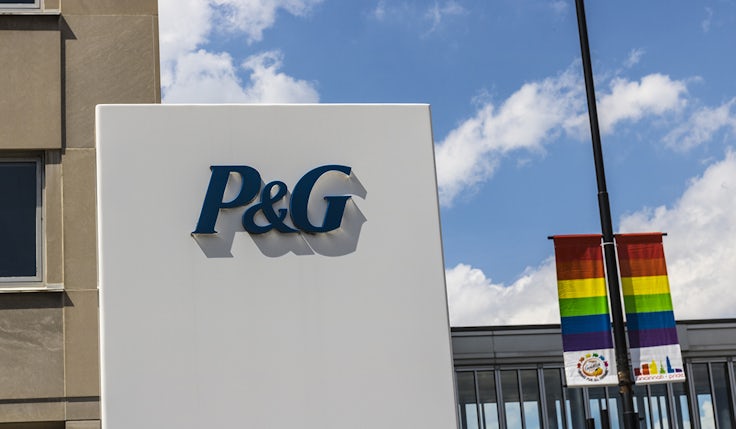P&G to prioritise innovation investment over bottom line
P&G reported a 4% drop in profits over the first quarter of its 2023 financial year, with gross profit reducing from $9.97bn (£8.86bn) in 2021 to $9.76bn (£8.67bn).

P&G’s CEO Jon Moeller has promised to prioritise investment in the FMCG giant and its brands over and above delivering the firm’s bottom line target, as it reported a small drop in profits in the three months leading to 30 September.
The company is “doubling down” on its strategy of supporting its brands through price rises with marketing and innovation investment, which has been “working well and delivering strong results” so far, CFO Andre Schulten added, speaking to investors today (19 October).
P&G reported a 4% drop in profits over the first quarter of its 2023 financial year, with gross profit reducing from $9.97bn (£8.86bn) in 2021 to $9.76bn (£8.67bn).
However, net sales rose 1% to $20.6bn (£18.3bn). The biggest driver for sales was the fabric and home care category, with net sales of $7bn (£6.2bn), followed by baby, feminine and family care products at $4.93bn (£4.38bn) and beauty, with net sales of $3.96bn (£3.5bn).
P&G views the ongoing economic turmoil as a “rough patch to grow through, not a reason to reduce investment in the long-term health of the business”, Schulten said.
In terms of investment, the company will not be “deprioritising innovation,” he said, adding: “Every innovation we have delivered in the market has created value, and continues to create value and contribute to our results.”
Emphasising the role of reinvestment and innovation at the company even amid a difficult macroeconomic environment, CEO Moeller said: “If we find ourselves, where we don’t currently, in a position where we’d have to choose between investing in the business and delivering a bottom line target, we will invest in the business.”
P&G to ‘close couple’ price increases with innovationAnswering questions on marketing and advertising spend, Schulten said that when it comes to media investment, “we really need to shift focus”.
“It is difficult to describe media sufficiently in dollars, especially when we are actively shifting our spending from linear or non-targeted TV, into programmatic and into digital spend that is a lot more targeted, a lot more precise in terms of delivering reach and quality of reach where we need it,” he said.
In July, P&G said digital media now accounts for more than 50% of spend. The firm has also upped its investment in advertising by $1.2bn (£1.07bn) over the last three years.
The company is moving away from a focus on “dollar spend”. Moeller recounted a recent situation where the company’s North America team had prepared information on category spend this year versus last year.
“I walked into the room and said, ‘This isn’t helpful. What we need to understand is what are our reach objectives? And are we sufficient and spending to achieve those reach objectives?’” he said.
He added that as P&G moves “a lot” of its marketing activity in-house, it has an impact on how costs are split. “For example, purchasing media moves out of the advertising budget and into the overhead budget. So that also affects the spend, period to period,” he said.
Inflationary impact
On the impact of inflation and the rising cost of living, Schulten said P&G is seeing “high pressure” on European consumers, depending on the level of support offered by European governments.
P&G therefore has to be “extra careful in terms of ensuring that consumers have appropriate access to our portfolio, making sure that we give the right value to them via superior, strong innovation, the right price and the right value offerings,” he said.
Moeller took this further, adding: “Value is found at the intersection of price, product and performance.
“It’s not just price. Price is an important component, but those other components are equally important.”
When it comes to price promotions, Schulten says the company has seen promotion levels return to around pre-pandemic levels, from 30% pre-Covid, to 16% during, and now sitting between 27% and 30%.
He said: “The most important element is to use promotion in the right way”.
Earlier this month, effectiveness expert Les Binet warned marketers against employing “senseless” price promotions in times of economic turmoil, explaining that only a “tiny” proportion of promotional sales are shown to be incremental and most price promotions actually reduce profits.







Comments